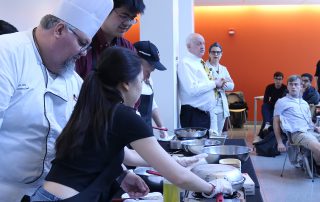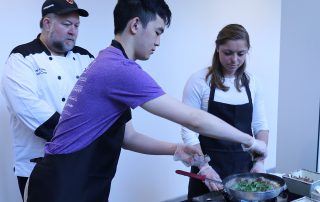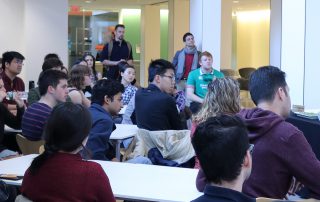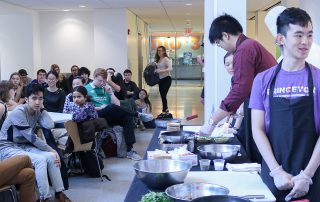Learning Goals
Co-developed by Marina Rustow, Khedouri A. Zilkha Professor of Jewish Civilization in the Near East and Professor of Near Eastern Studies and History, and Lorenzo Bondioli, a graduate student in History, NES 390: Medieval Cairo takes the study of history down to the micro-level, using the medieval twin cities of Fustat–Cairo as a laboratory of investigation. The course uses creative anachronism to explore the material culture of Egypt between the 10th and 15th centuries. By experiencing the complexity and sophistication of a preindustrial, non-Western society, students confront their assumptions about modernity and European dominance and develop their historical imaginations, reconstructing the life of a world distant from their own.
250th Fund Criteria
This collaboratively taught course addressed a significant gap in the curriculum, introduced new pedagogical methods, and established interdisciplinary and interdivisional teaching collaborations. Rather than focus on the making of the Middle East or contemporary political formations, Medieval Cairo aimed to excite students’ interest in premodern history by addressing the material foundations and daily lives of unknown people. The course limited the number of lecture-hours, relying instead on group work, small-group discussions, and experimentation in order to help students understand the technical capacities and constraints that people living in preindustrial societies faced. Rustow and Bondioli designed experiential, collaborative exercises, like the preparation of a medieval Egyptian feast, to engage students in historical thinking via both the mind and the body. As they described it, the course could not take place without interdisciplinary or interdivisional collaboration. Their collaborators included specialists from Firestone, the Art Museum, Campus Dining, and the Lewis Center for the Arts. Outside Princeton, the course engaged two curators from the Metropolitan Museum of Art, an experimental archeologist from the Khalili Research Centre for the Art and Material Culture of the Middle East at the University of Oxford, two specialists in paper-making and South and Central Asian paper history from the University of Iowa Center for the Book, and a former food writer for the LA Times who has discovered and translated unpublished medieval Arabic cookery books in Syrian libraries.
Learning Opportunities
Students in Medieval Cairo had the opportunity to contribute to an evolving state of knowledge about the material culture of a premodern non-European civilization. They made field visits to Firestone, handling coins and studying hard-to-decipher manuscripts, and to the Metropolitan Museum of Art. They wrote regularly in response to textual and non-textual artifacts, engaging questions about the social history of things, the possibility of medieval capitalism, and museum acquisition practices, among other topics. Perhaps most excitingly, students participated in a series of hands-on practica, including a paper-making workshop, an ink-cooking practicum, a cooking practicum, and rock-carving exercises, which allowed them to reimagine a past that is foreign and unfamiliar – and in the process, to defamiliarize the world in which they live.
Images




